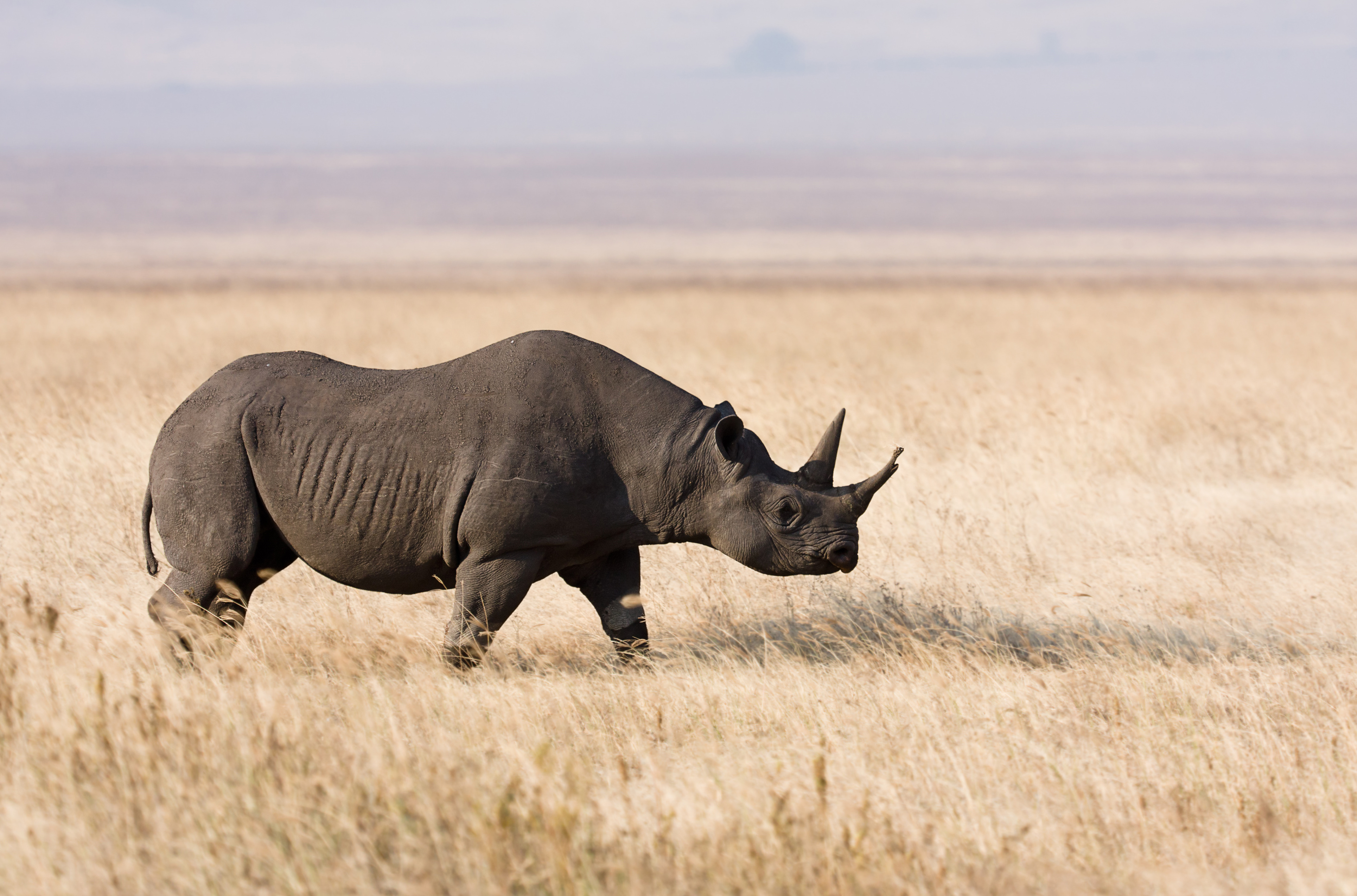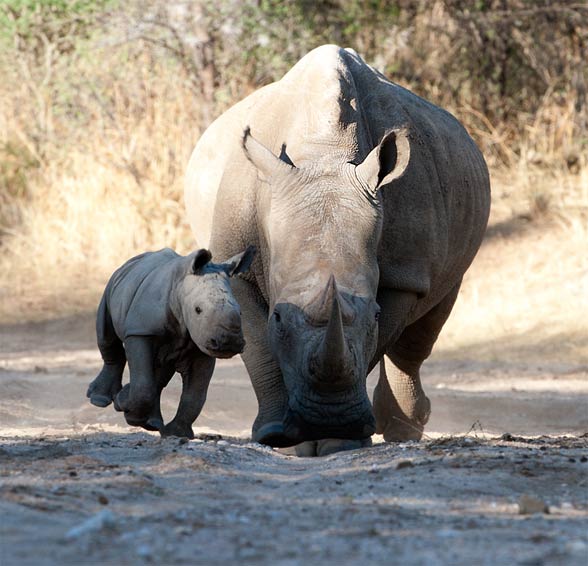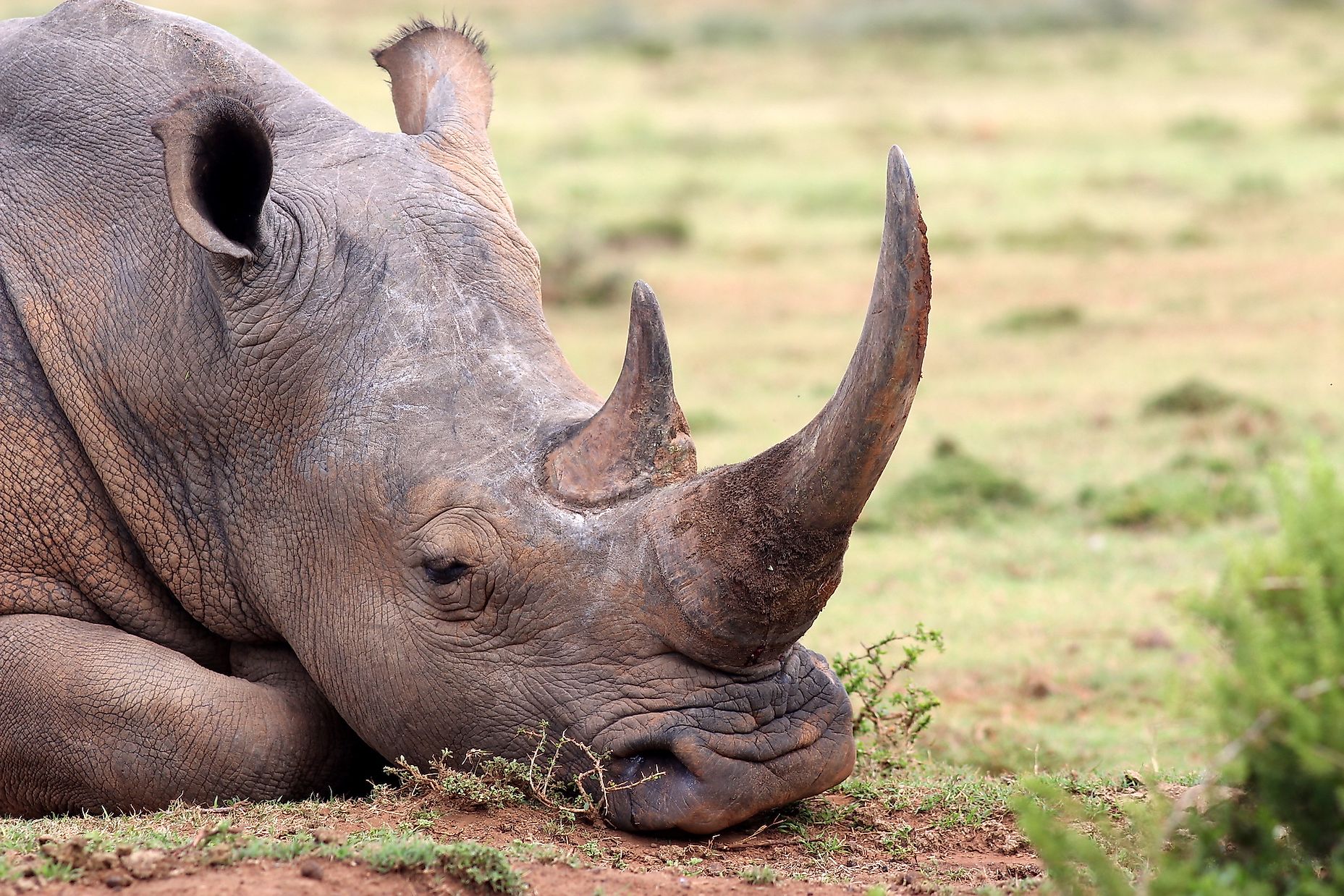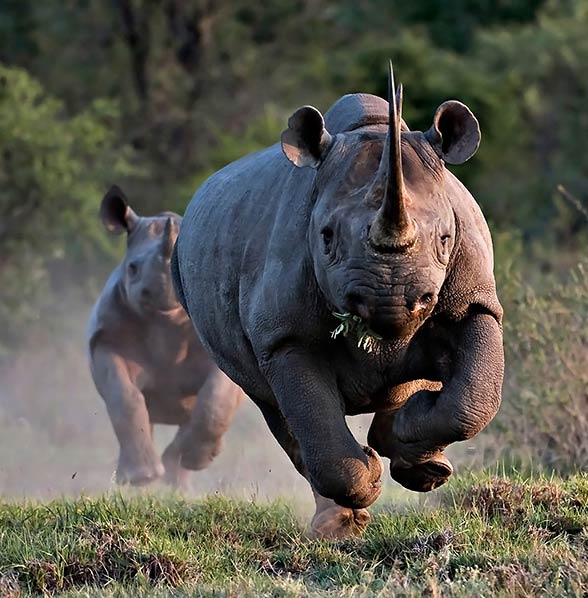
Lone Black Hooklipped Rhino in Etosha National Park Stock Photo
The hook-lipped rhino calf walks alongside or behind its mother. They will stay with their mother's for 2-3 years, until shortly before the birth of the next offspring when she will drive them away. Life span. 40 years . Conservation. The rapid decline in numbers of both African rhino species is a result of extensive poaching for their horns.

HookLipped Rhino at Waterhole in Etosha National Parl Stock Photo
Wikipedia

M3 Hook lipped rhinoceros walking turning YouTube
Diceros the hook-lipped or black rhinoceros with six subspecies:. The black rhino was first seen in captivity in the 1870s, the white rhino in 1944. Their status in the wild is precarious.

Animals
Established in 1964, the IUCN Red List of Threatened Species has evolved to become the world's most comprehensive information source on the global conservation status of animal, fungi and plant species.

The Black Rhinoceros WriteWork
Hook-lipped rhinoceros - Diceros bicornis . The black rhino is the smallest of the African breeds. It is critically endangered, with very few left in the wild, and a dwindling population in captivity. Introduction. Like many other rhino species, human poachers have decimated these creatures to a mere fraction of the original population. The.

Hooklipped Rhinoceros, Diceros bicornis Hooklipped Rhino… Flickr
The black rhinoceros, black rhino or hook-lipped rhinoceros ( Diceros bicornis) is a species of rhinoceros, native to eastern and southern Africa including Angola, Botswana, Kenya, Malawi, Mozambique, Namibia, South Africa, Eswatini, Tanzania, Zambia, and Zimbabwe. Although the species is referred to as black, its colours vary from brown to grey.

"Hook Lipped Black Rhino" by phil decocco Redbubble
A rare sighting of a black rhino on the move in the open plains. There are only a few black rhinos in the Maasai Mara and they are mostly quite shy so to see.

Hooklipped (or Black) Rhino at golden hour (critically en… Flickr
Black rhinos, otherwise known as the hook-lipped rhino, is one of two species of rhinoceros native to Africa (the other being the white rhino). Although once found across sub-Saharan Africa, rampant poaching has consequently limited the geographical distribution of the remaining black rhino population.

Black rhinoceros hooklipped rhino
The eastern black rhinoceros ( Diceros bicornis michaeli ) is also known as the East African black rhinoceros or eastern hook-lipped rhinoceros. It is a subspecies of the black rhinoceros. Its numbers are very low due to poaching for its horn and it is listed as critically endangered. Te. Terrestrial.

Black Rhinoceros Also Known As Hooklipped Rhino Lewa Downs Wildlife
Diceros the hook-lipped or black rhinoceros with six subspecies: D. bicornis longipes the West African black rhinoceros that is believed to have become extinct in 2006 D.b. brucii the.

Hooklipped Rhinoceros, Diceros bicornis Hooklipped Rhino… Flickr
Hook-Lipped Rhinoceros: The narrow upper lip of the Black Rhino is adapted to feeding from trees and bushes and is perfect for ripping of leaves. Prehensile-Lipped Rhinoceros: Refers to the same characteristic hooked-upper lip. Scientific Name The scientific name for the Black Rhino is Diceros bicornis.

What Are Rhino Horns Made Out Of? WorldAtlas
The black rhinoceros, black rhino or hook-lipped rhinoceros is a species of rhinoceros, native to eastern and southern Africa including Angola, Botswana, Kenya, Malawi, Mozambique, Namibia, South Africa, Eswatini, Tanzania, Zambia, and Zimbabwe. Although the species is referred to as black, its colours vary from brown to grey. It is the only extant species of the genus Diceros.

Hooklipped (or Black) Rhino (critically endangered) Flickr
The hook-lipped or black rhinoceros (Diceros bicornis) is a mammal of the rhinocerotidae family. Its closest relative is the square-lipped rhinoceros (Ceratotherium simum), from which it is most clearly differentiated by its finger-shaped pointed upper lip, from which it derives its name, which it uses to pluck leaves and twigs from trees.

Lone Black Hooklipped Rhino Stock Image Image of lone, diceros 89500061
Synonym: Hook-lipped rhino Scientific name: Diceros bicornis: "Di" meaning "two", "cerato" meaning "horn" in Greek and "bi" meaning "two", and "cornis" meaning "horn" in Latin Subspecies: There are four subspecies of the black rhino: Southern Central black rhino Diceros bicornis minor Eastern black rhino Diceros bicornis michaeli

Black rhinoceros hooklipped rhino
Poaching The greatest threat facing African rhinos is poaching for the illegal trade in their horns, which has soared in recent years. The number of rhinos poached in South Africa alone has increased by 9,000% since 2007 - from 13 to a record 1,215 in 2014.

Hooklipped (Black) Rhino, Ngorongoro Crater Game Stock Photo Image
• English: Black Rhino, Black Rhinoceros, Hook-lipped Rhinoceros • French: Rhinocéros noir • Spanish; Castilian: Rinoceronte Negro. historical Black Rhino that used to occur in Zambia but which had been wiped out by poaching by 1995 might be better classified as D. b. michaeli than D. b. minor. However, on account of the small sample